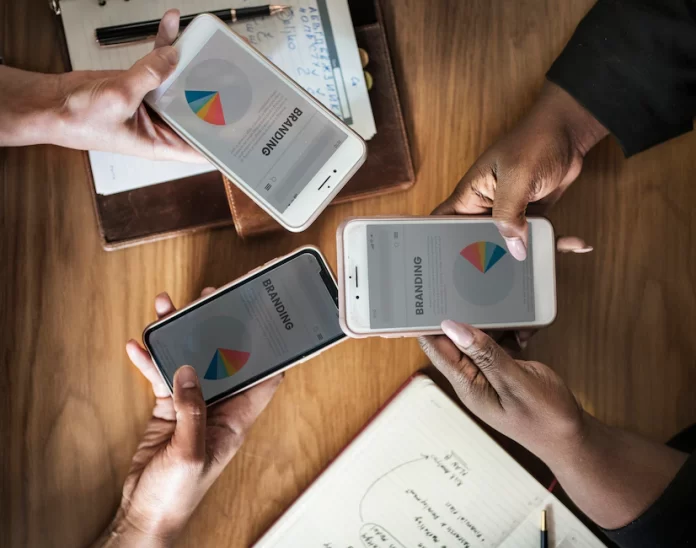The digital landscape has undergone a seismic shift over the past decade, and mobile marketing has emerged as an undisputed cornerstone in this evolution. As of 2023, with billions of smartphone users worldwide, the mobile device is no longer just a communication tool but a gateway to the consumer’s world. Whether it’s a push notification, an immersive augmented reality ad, or a personalized shopping experience, brands are striving to make their presence felt in the pocket-sized screens of their potential customers.
A successful mobile marketing strategy in 2023 is not just about being present but about being relevant. With AI-driven algorithms, real-time data analytics, and an increased emphasis on personalization, marketing messages have transcended from being generic broadcasts to tailored conversations. Contextual targeting, ensuring messages resonate with where, when, and how a consumer is interacting with their device, has become paramount. Furthermore, brands must adopt an omni-channel approach, ensuring a seamless transition and consistent experience across devices.
With the rise of 5G technology, augmented reality, and voice search, marketers are provided with an array of tools to craft innovative campaigns that not only captivate but also convert. As the digital realm becomes more saturated, those who leverage these advancements while maintaining a keen sense of their audience’s needs will be the ones who thrive in the mobile marketing arena of 2023.
-
Understanding the 2023 Mobile Landscape
Before we dive into specific strategies, it’s crucial to grasp the current mobile landscape. 2023 sees a rise in 5G adoption, app-less experiences through Progressive Web Apps (PWAs), and a surge in Augmented Reality (AR) experiences, among other trends. In 2023, global smartphone penetration has reached unprecedented heights. Recent reports suggest that there are more mobile devices on Earth than people. This proliferation means a potentially endless audience for brands willing to tap into mobile users’ habits and preferences.
-
Collaborating with an SEO Agency
The digital landscape is vast and continually changing. in the age of information, being discoverable is paramount. Partnering with an SEO agency can provide expertise in optimizing your mobile website for search engines. These agencies can optimize your content, ensure a faster load time, and help in link-building, making sure that when a potential customer searches for something relevant, your brand is right there.
-
Personalization at Its Peak
Dynamic Content: Gone are the days when one-size-fits-all content sufficed. Today, dynamic content that adapts based on the user’s behavior, location, and preferences is paramount.
AI and Machine Learning: AI has matured and is at the forefront, predicting user behavior, automating tasks, and offering personalized product or content recommendations.
With the amount of data available, there’s no excuse for generic marketing messages. Personalized ads, based on user behavior, location, and preferences, can significantly improve engagement rates. AI and machine learning algorithms play a crucial role in real-time personalization, making it more accurate and efficient.
-
Voice Search Optimization
With the increase of voice-activated aids like Alexa, Siri, and Google Assistant, optimizing for voice search is more vital than ever. By 2023, voice searches account for a significant chunk of all online searches. Brands need to optimize for this by:
- Understanding natural language processing.
- Using long-tail keywords.
- Ensuring the content answers common questions related to your product/service.
-
Micro-Moments: Be There, Be Useful
Users often turn to their phones for quick answers – be it to buy something, learn something, or go somewhere. These are termed as ‘micro-moments.’ Brands need to anticipate these moments and provide timely and relevant content. For instance, a user searching for “best winter jackets” should be met with your ad if you sell them. It’s about being there at the right time with the right message. In 2023, seizing these moments with the right content, whether it’s a product suggestion or a quick tip, can make or break your mobile strategy.
-
AR and VR: Beyond the Gimmicks
No longer just fun tools, AR and VR have found their footing in practical applications. With technological advances, augmented reality (AR) and virtual reality (VR) have become accessible to marketers. AR and VR are transforming how consumers interact with brands. Virtual try-ons, interactive 3D product displays, and immersive experiences are transforming the shopping journey. Offering immersive experiences can lead to higher engagement and even increased sales.
-
Embrace the App-less Experience
PWAs are leading the charge here. Why download an app when you can have the same experience on a browser? While apps offer a dedicated space for brands on users’ devices, there’s a growing trend towards app-less experiences. Progressive Web Apps (PWAs) are web applications that function like regular mobile apps but without the need to be downloaded from app stores. They offer push notifications, offline access, and faster load times, without the commitment of an app download.
-
Chatbots and AI-driven Customer Service
With the advancements in AI, chatbots have become more sophisticated. They’re no longer limited to basic queries. 24/7 customer service is now achievable, thanks to AI-driven chatbots. Instead, they provide personalized recommendations, address complex issues, and offer a near-human customer service experience. Implementing AI-driven customer service ensures users get instant answers, improving satisfaction and increasing the chances of conversion.
-
Video Content Remains King
While we’ve seen the rise of many content formats, video content remains a dominant force in mobile marketing. With the growing popularity of short-form videos, live streaming, Stories on various social media and interactive video content dominate the mobile landscape. Platforms like Tik-Tok and Instagram Reels have shown the potency of bite-sized, engaging videos. It’s engaging, easily shareable, and can tell a compelling story in just a few seconds.
-
Privacy-first Marketing
Post-cookie era marketing emphasizes privacy. GDPR, CCPA, and other regulations have set the tone. With rising concerns about data privacy, adhering to regulations and being transparent about data collection practices is more critical than ever. Ensure you gain explicit user consent before collecting data, and be transparent about how you use it. Strategies now need to prioritize transparency, gaining explicit consents, and offering value in exchange for data.
-
Leveraging Mobile Wallets and M-Commerce
The convenience of mobile wallets like Apple Pay, Google Wallet, and Samsung Pay means they’re not just for payments anymore. Loyalty cards, coupons, tickets, and more are all going digital. Integrate easy mobile payment options to enhance the user experience and boost conversion rates. As mobile payments become more mainstream, integrating mobile wallet capabilities into marketing strategies provides two benefits:
- Simplifying the purchase journey by allowing instant transactions.
- Leveraging the wallet app for promotional campaigns and loyalty programs.
-
Geo-fencing and Location-based Marketing
Geofencing and beacon technology allow brands to send targeted messages to users based on their location. By targeting users based on their location, businesses can offer timely deals, information, or incentives. Imagine a user getting a discount notification for a cafe they’re walking by! This hyper-targeted approach can drive foot traffic to physical locations and create a more personalized user experience.
-
Continual Performance Analysis
In the digital world, stagnation means regression. Regularly analyze your mobile marketing strategies. Use analytics tools to monitor ad performance, user engagement, click-through rates, and more. By consistently evaluating and adjusting, businesses can ensure their strategies remain effective and relevant.
-
Social Shopping
Platforms like Instagram and Facebook are now not only for discovery but have integrated shopping features, blurring the lines between entertainment and e-commerce. Integrating shopping features into your social media strategy is a must. Users can now see a product on their feed and buy it with just a few taps. Leveraging social shopping allows brands to decrease the steps to purchase, creating a seamless buying experience.
-
Dark Mode Optimization
Dark mode has been more than just a trend; it’s a preference for many. Beyond being easier on the eyes in low-light environments, it saves battery life on OLED screens. Ensuring your mobile content and ads are optimized for dark mode means you respect user preferences, which can lead to better engagement and user satisfaction.
-
Adaptive and Responsive Design
With the plethora of devices available, from various smartphone sizes to tablets, a one-size-fits-all approach doesn’t work. Adaptive and responsive designs ensure your content looks flawless, irrespective of the device. It adjusts graphics, text, and other elements to provide an optimal viewing experience. Remember, a frustrated user (due to poor design) might just mean a lost customer. Use fluid grids, flexible images, and media queries.
-
Interactive and Immersive Content
In an era where users are bombarded with information, interactive and immersive content stands out. It’s not just about reading or watching; it’s about experiencing. 360-degree videos, interactive quizzes, and polls engage users more than static content. They not only increase the dwell time but also enhance user experience. These engage the user, making them active participants rather than passive viewers. By fostering this deep level of engagement, brands can create lasting impressions.
Conclusion
Mobile marketing in 2023 is about understanding the customer, leveraging new technologies, and building genuine relationships. By staying ahead of trends and continuously innovating, marketers can create strategies that resonate with the modern mobile user.
From AI and AR to ethical considerations and personalization, the opportunities for growth and connection are vast. But it requires careful planning, flexibility, and a deep understanding of the changing landscape.
As the line between the digital and physical worlds continues to blur, those who embrace these strategies will be well-positioned to connect with their audiences in meaningful ways and drive success in the increasingly mobile-centric world of 2023.






